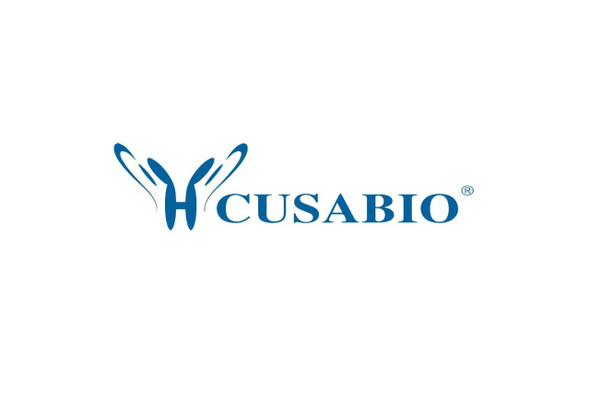Cusabio Human Recombinants
Recombinant Human Schlafen family member 11 (SLFN11), partial | CSB-EP021760HU1
- SKU:
- CSB-EP021760HU1
- Availability:
- 3 - 7 Working Days
Description
Recombinant Human Schlafen family member 11 (SLFN11), partial | CSB-EP021760HU1 | Cusabio
Alternative Name(s): SLFN11; Schlafen family member 11; EC 3.6.-.-
Gene Names: SLFN11
Research Areas: Cell Biology
Organism: Homo sapiens (Human)
AA Sequence: EKWVGMMTDTDPDLLQLSEDFECQLSLSSGPPLSRPVYSKKGLEHKKELQQLLFSVPPGYLRYTPESLWRDLISEHRGLEELINKQMQPFFRGILIFSRSWAVDLNLQEKPGVICDALLIAQNSTPILYTILREQDAEGQDYCTRTAFTLKQKLVNMGGYTGKVCVRAKVLCLSPESSAEALEAAVSPMDYPASYSLAGTQHMEALLQSLVIVLLGFRSLLSDQLGCEVLNLLTAQQYEIFSRSLRKNRELFVHGLPGSGKTIMAMKIMEKIRNVFHCEAHRILYVCENQPLRNFISDRNICRAETRKTFLRENFEHIQHIVIDEAQNFRTEDGDWYGKAKSITRRAKGGPGILWIFLDYFQTSHLDCSGLPPLSDQYPREELTRIVRNADPIAKYLQKEMQVIRSNPSFNIPTGCLEVFPEAEWSQGVQGTLRIKKYLTVEQIMTCVADTCRRFFDRGYSPKDVAVLVSTAKEVEHYKYELLKAMRKKRVVQLSDACDMLGDHIVLDSVRRFSGLERSIVFGIHPRTADPAILPNVLICLASRAKQHLYIFPWGGH
Source: E.coli
Tag Info: N-terminal 10xHis-tagged
Expression Region: 345-901aa
Sequence Info: Partial
MW: 69.6 kDa
Purity: Greater than 85% as determined by SDS-PAGE.
Relevance: Inhibitor of DNA replication that promotes cell death in response to DNA damage . Acts as a guardian of the genome by killing cells with defective replication. Persistently blocks stressed replication forks by opening chromatin across replication initiation sites at stressed replication forks, possibly leading to unwind DNA ahead of the MCM helicase and block fork progression, ultimately leading to cell death . Acts independently of ATR . Also acts as an interferon -induced antiviral protein which acts as an inhibitor of retrovirus protein synthesis . Specifically abrogates the production of retroviruses such as human immunodeficiency virus 1 by acting as a specific inhibitor of the synthesis of retroviruses encoded proteins in a codon-usage-dependent manner . Binds to tRNAs and exploits the unique viral codon bias towards A/T nucleotides . The exact inhibition mechanism is unclear: may either sequester tRNAs, prevent their maturation via post-transcriptional processing or may accelerate their deacylation . Does not inhibit reverse transcription, integration or production and nuclear export of viral RNA.
Reference: "DNA sequence of human chromosome 17 and analysis of rearrangement in the human lineage." Zody M.C., Garber M., Adams D.J., Sharpe T., Harrow J., Lupski J.R., Nicholson C., Searle S.M., Wilming L., Young S.K., Abouelleil A., Allen N.R., Bi W., Bloom T., Borowsky M.L., Bugalter B.E., Butler J., Chang J.L. Nusbaum C. Nature 440:1045-1049(2006)
Storage: The shelf life is related to many factors, storage state, buffer ingredients, storage temperature and the stability of the protein itself. Generally, the shelf life of liquid form is 6 months at -20?/-80?. The shelf life of lyophilized form is 12 months at -20?/-80?.
Notes: Repeated freezing and thawing is not recommended. Store working aliquots at 4? for up to one week.
Function:
Involvement in disease:
Subcellular Location:
Protein Families:
Tissue Specificity:
Paythway:
Form: Liquid or Lyophilized powder
Buffer: If the delivery form is liquid, the default storage buffer is Tris/PBS-based buffer, 5%-50% glycerol. If the delivery form is lyophilized powder, the buffer before lyophilization is Tris/PBS-based buffer, 6% Trehalose, pH 8.0.
Reconstitution: We recommend that this vial be briefly centrifuged prior to opening to bring the contents to the bottom. Please reconstitute protein in deionized sterile water to a concentration of 0.1-1.0 mg/mL.We recommend to add 5-50% of glycerol (final concentration) and aliquot for long-term storage at -20?/-80?. Our default final concentration of glycerol is 50%. Customers could use it as reference.
Uniprot ID: Q7Z7L1
HGNC Database Link: N/A
UniGene Database Link: N/A
KEGG Database Link: N/A
STRING Database Link: N/A
OMIM Database Link: N/A






